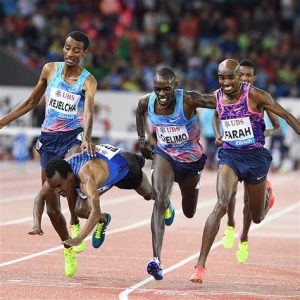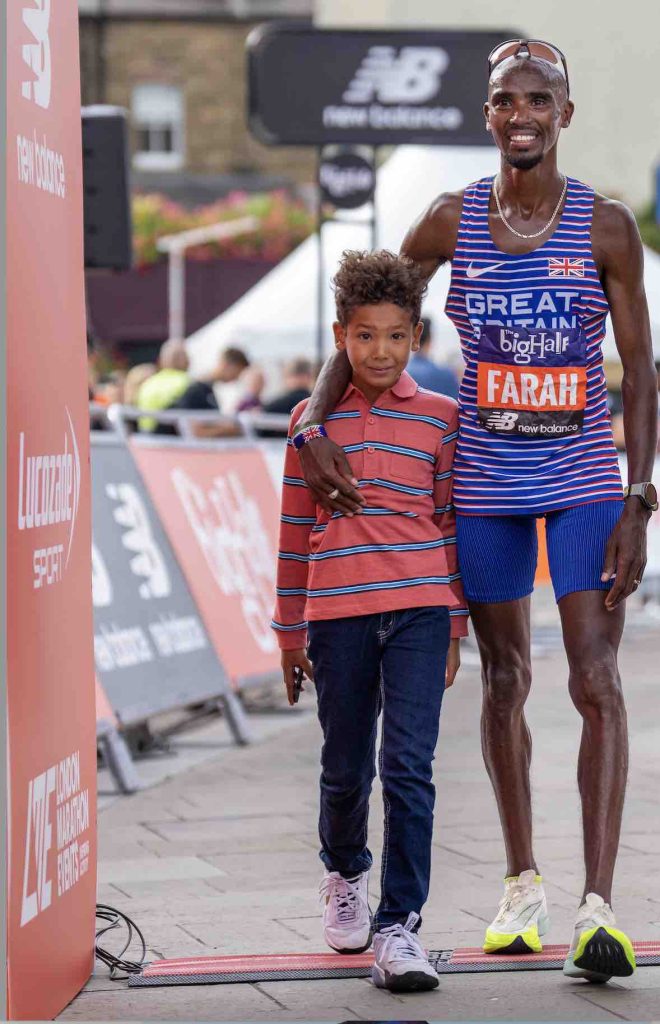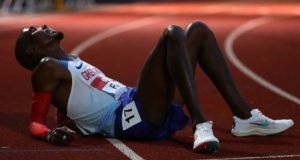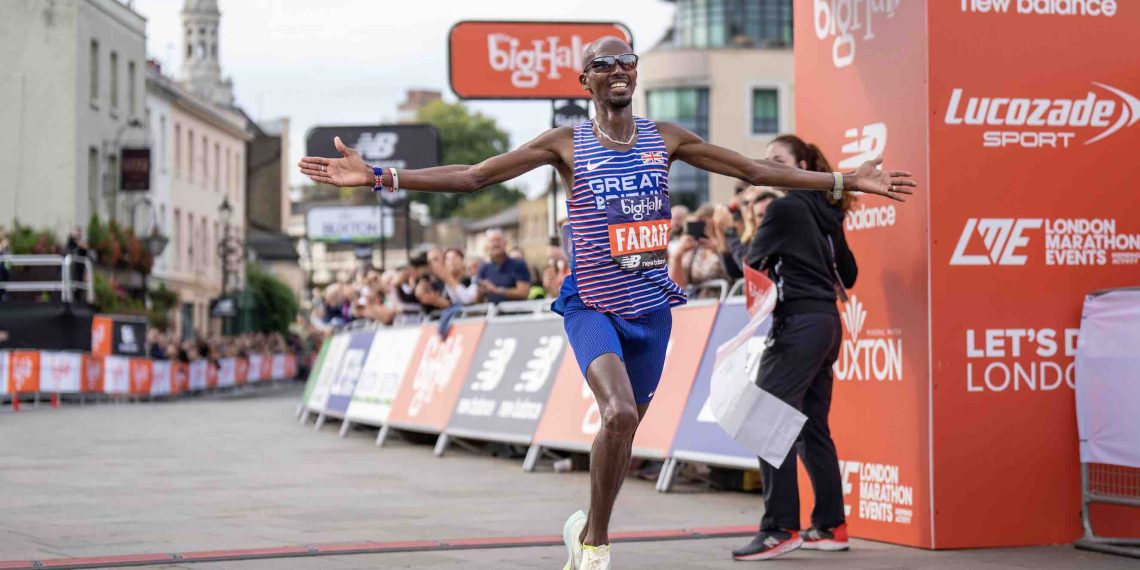RelatedPosts
This feature by Deji Ogeyingbo discusses Mo Farah’s choices in his athletic career after Mo withdrew from the 2022 TCS London Marathon.
What is next for Mo Farah after pulling out of the London Marathon?
When Mo Farah announced he was pulling out of this weekend’s London Marathon after suffering a hip injury, there was a feeling the end is neigh for a man who once made a nation stand still in awe of his running prowess after he took part in what was known as “Super Saturday” in Great Britain’s Olympic history.
There are running greats like Kenenisa Bekele and Eliud Kipchoge who have transcended the sport in their own way, but in the period of dominance of Farah that spanned almost a decade, there was a particular swagger that endeared him to most fans. His celebration- the now famous hands-to-head ‘M’ gesture, his mind games when competing against much faster runners,

and his racing style mirrored his life all encompassing what made him special.
He is the only man apart from Lasse Viren, the Finnish star of the 1970s, to win the 5,000m and 10,000m at successive Olympics. Farah also won those events three times at the world track and field championships. From 2011 through 2017, he was nearly unbeatable on the track at his sport’s biggest competitions.
With some of his enthusiasts hoping to see him return at the London Marathon, there was glum when Farah revealed that he had been feeling “pain and tightness” in his right hip over the past 10 days and that despite treatment, the issue “hasn’t improved enough” to enable him to make the start line in Greenwich.
Farah has only raced twice this year, both coming in the United Kingdom. The results were mixed fortunes for the four-time Olympic Champion. His return to competitive running in 2022 ended with a humbling defeat by club runner Ellis Cross at the Vitality London 10,000.
The Brit, who in July revealed he was brought to the UK illegally as a child and forced to work as a domestic servant, was racing for the first time since failing to qualify for the Tokyo Olympics last June, and he was unable to outpace 26-year-old Ellis Cross over the final stages.
Farah finished the race in 28:44, a minute outside his best time on the road, and was non-committal afterward about his plans for the rest of the season. After the race, Farah was more scathing of his performance than everyone else. ‘Today was a tough day. Ellis did really well to beat me. But you have to see where you are. That’s where I am now. You’ve got to take it race by race and let the body see what you can do. I’m not young anymore.’
It was the sort of day that highlighted the scale of the climb, though the identity of the winner was as heartening in its own right as it was an indicator that Farah is a long way past his best. It is worth recognizing that Farah has lost six of the past nine months to his injuries, but in Cross, there was a delight of a parallel story.

In what was a tiny sign that Farah seemed to be returning to his best, Farah claimed success at the men’s Big Half in London in early September, finishing with a time of 1:01:49.
Farah has been going through a lot in the past few years. After leaving the track to focus on the road then struggled and reverted back to the track as he failed to qualify for the Olympics. Injuries like these have played a huge part in the fallback, and for someone who is used to training with groups, he has had to resort to using treadmills all because of the setbacks he has faced.
Most track fans want athletes to retire so badly at times just because they’re not putting up results like they were at their peak. It’s healthier for the sport and for the athletes themselves if they want to continue competing for fun. But at some point, there has to be a thin line between keeping your dignity and legacy intact and losing races while still enjoying oneself. Farah has to make this decision.
Few runners have made the transition from the track into the marathon look seamless. It’s always not pleasant, but there were optimists who felt Farah was going to produce incredible times on the road. When he dabbled into the marathon in 2014- which incidentally was the London Marathon, Farah has been on and off, not really knowing what to do.
The last truly successful year he had on the track was probably 2015 and maybe 2017 at World Championship races, but in reality, Farah has really struggled to transition into the marathon. For an elite runner like him, injuries did not help his course. In the last year, he has hinted at retirement. At 39, you could tell that he’s struggling to get the kind of peak performance that he once had, especially on the track.

I’m a big fan of Farah. There are many ways an older athlete decline. In Mo’s case, he has fallen out of love with training. You can’t compete at this level without loving the workouts. For some reason, I think Farah should only continue if he falls in love with the whole process, not just the competition but the workouts as well. And if not, then no shame in it. He’s had a fantastic career! London would have loved to see him run. Maybe for one last time. After all, that was where he ran his first marathon.
Author

Deji Ogeyingbo is one of Nigeria’s leading Track and Field Journalists as he has worked in various capacities as a writer, content creator, and reporter for radio and TV stations in the country and Africa. Deji has covered varying degrees of Sporting competitions within and outside Nigeria which includes, African Championships and World Junior Championships. Also, he founded one of Nigeria’s leading Sports PR and Branding company in Nikau Sports in 2020, a company that aims to change the narrative of how athletes are perceived in Nigeria while looking to grow their image to the highest possible level.
View all posts






















